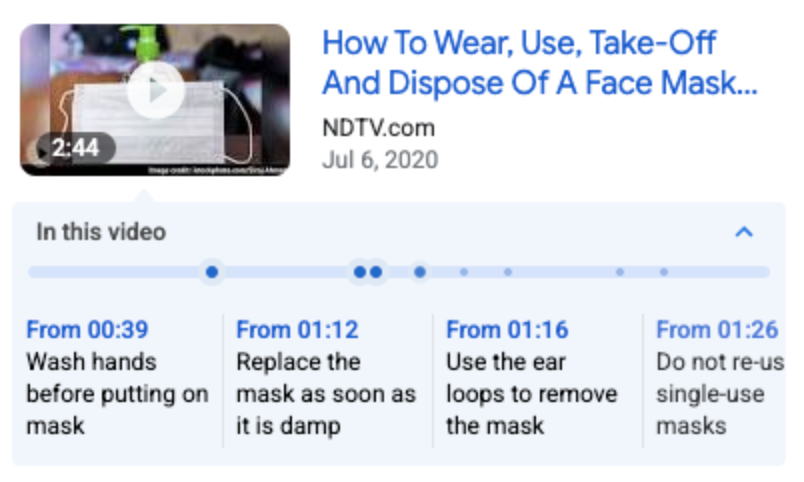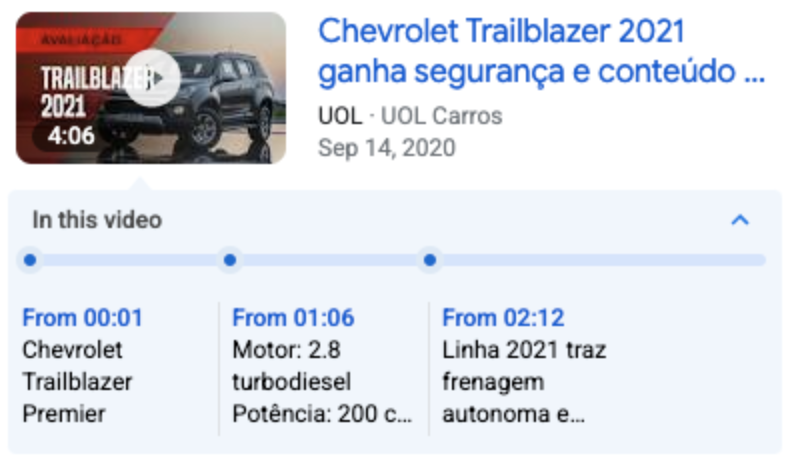Segunda-feira, 19 de julho de 2021
Desde o lançamento dos Momentos importantes em vídeo, em 2019, continuamos a expandir e aprimorar o recurso. Melhoramos o design e levamos os Momentos importantes para mais vídeos, incluindo dispositivos móveis e computadores, em todas as regiões em que a Pesquisa Google está disponível. Os Momentos importantes estão ajudando mais pessoas a se conectarem diretamente com os segmentos de vídeos mais relevantes e a navegarem por eles como capítulos de um livro.
Hoje estamos lançando uma nova maneira de ativar os Momentos importantes em vídeo no seu site sem precisar rotular cada segmento manualmente. Você só precisa informar ao Google o padrão do URL para pular até uma marcação de tempo específica do vídeo. Em seguida, o Google usará IA para identificar momentos importantes do vídeo e exibirá links diretamente para esses momentos nos resultados da pesquisa.


Primeiro anunciamos o teste Beta do SeekToAction durante o Google I/O. A partir de hoje, o recurso deixa de ser Beta e é compatível com
a marcação para qualquer site com vídeos. Veja algumas dicas para implementar essa
marcação:
- Os URLs precisam conseguir criar links diretos para pontos que não sejam o início no
vídeo. Por exemplo,
https://www.example.com/example?t=30inicia 30 segundos depois do começo do vídeo. - Use a marcação
SeekToActionem todas as páginas de vídeo em que você quer que o Google identifique automaticamente os Momentos importantes e siga nossas outras diretrizes. Veja um exemplo detalhado. - Para identificar automaticamente Momentos importantes no seu vídeo, o Google precisa buscar os arquivos de conteúdo em vídeo.
A marcação SeekToAction se aplica somente a vídeos incorporados ao seu site. Se
você postar vídeos em plataformas de terceiros em que não controla a marcação schema.org, poderá entrar
em contato com elas para verificar a compatibilidade.
Esperamos que a marcação SeekToAction seja uma maneira mais fácil e eficiente de ativar Momentos
importantes e ajudar as pessoas a interagir mais profundamente com seus vídeos. Em caso de dúvidas, faça perguntas no fórum,
entre em contato com @googlesearchc no Twitter ou envie
feedback diretamente nas nossas páginas de documentação.
